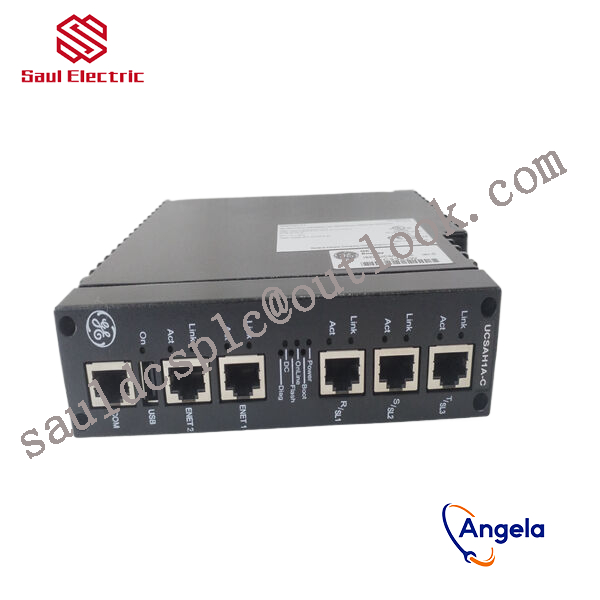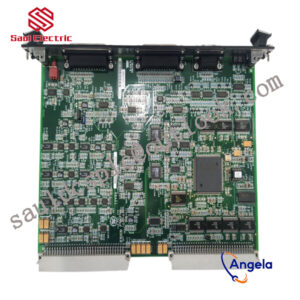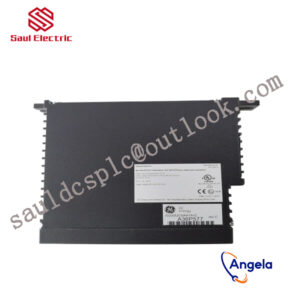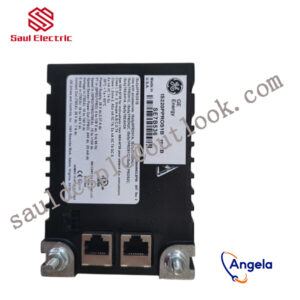Description
IS200EXCSG1A Product Introduction
The specific application scope of the product
will depend on the needs of system integration and industrial application, but generally speaking, this type of embedded controller module can be applied to the following categories:
manufacturing processes, etc.
monitoring and control system.
of the controller module, as well as the specific needs of the customer.
designed to manage gas or steam turbines.
It has a CIMPLICITY graphical interface and an HMI with software suitable for running heavy-duty turbines.
be installed at the bottom of the cabinet. For a small setup that is easy to serve a triple redundant system, up to three components can be installed side by side.
he board can operate within a temperature range of 0 to 65 degrees Celsius without the need for a fan for cooling. NFPA Class 1. This board can be used for two applications.
How giants brought the robotics industry upAffected by the trend of China”s manufacturing transformation and upgrading, the “machine substitution” craze has arrived. Since 2013, China”s industrial robot market has begun to develop rapidly. Judging from the purchase volume of robots, China has become the world”s largest application market.However, more than half of the dividends generated by China”s huge market have been captured by the “four major families” of robots (Japan”s Yaskawa Electric, FANUC, Germany”s KUKA, and Switzerland”s ABB).According to Zhiyan Information, China”s industrial robot market is dominated by foreign brands, and the “four major families” accounted for 57% of the domestic market in 2017. In the field of high-end industrial robots, the share of the four major families of multi-jointed robots with six axes or above is 95%, the share of the four major families in the automotive industry with concentrated downstream high-end applications is 90%, and the share in the welding field is 84 % .It can be seen that the oligopoly competition pattern in the high-end field has basically been established. Correspondingly, the market share of domestic robots still needs to be improved. For independent brands to catch up with foreign brands, there is still a long way to go in terms of core technology and user services.On the other hand, the development of the “four major families” of robots to this day is world-renowned, which is inseparable from decades of intensive cultivation. The growth path behind them is worth learning and exploring by domestic ontology manufacturers.1. Build unique advantages with core technologiesFor robot manufacturing, the four major families firmly grasp the key technologies of core components.Especially when it comes to servo motors, Japan”s Yaskawa Electric Co., Ltd., which is dominated by servo drives, cannot be avoided. In the process of Yaskawa Electric”s development and growth, this critical step is inseparable, and it is also a pioneering work in the field of motors – the development of the world”s first DC servo motor Minertia .As the company that developed the world”s first servo motor, Yaskawa Electric, founded in 1915, has been leading the trend with ultra-high-speed, ultra-precision motion control technology for many years.The biggest advantage of its robot is its high stability, which can still maintain normal operation even under overload conditions. Therefore, Yaskawa Electric is very popular in heavy-load application fields such as the automotive industry.Combining market demand with concentration and investment in technology is the key to Yaskawa Electric achieving major breakthroughs. The development of servo motors is based on the urgent need to improve production efficiency by major Japanese manufacturers.At that time, the motor took a long time to start and stop, which made it impossible to further improve production efficiency. Undoubtedly, if this technical difficulty can be solved, huge market potential will be released.Yaskawa Electric keenly captures this market pain point and concentrates on research and development here. However, success does not come overnight. In the early stages of technological breakthroughs, there will always be countless experimental failures.Fortunately, hard work paid off. With the advantages of advance layout and technology accumulation, Yaskawa Electric was able to achieve this major innovation – Mitsuyuki Fukuda, an engineer at Yaskawa Electric at the time, used the method of attaching coils to the rotor surface. , to reduce the rotor diameter and control the motor “s moment of inertia to a minimum. It is understood that the response speed of this motor was almost 100 times that of ordinary motors at the time, which made Yaskawa Electric widely welcomed by the market.Of course, this landmark technological leap did not stop Yaskawa Electric. Since then, Yaskawa Electric has continued to polish its own technology with the spirit of craftsmanship, and has continued to innovate in order to develop products that better meet user needs. Every technological breakthrough means leading the entire industry to progress.According to reports, in 2018 (March-November), Yaskawa achieved revenue of 361.3 billion yen, a year-on-year increase of 6.3%. As of September 2015, the cumulative number of robots sold by Yaskawa Electric has exceeded 280,000 units, becoming the global robot sales champion.Similarly, FANUC, known as the “Microsoft of robotics”, its founder Seiemon Inaba is also very convinced of the power of technology. He believes that continuous experimentation and innovation through mistakes are the key to FANUC. A creed that has always been there.In order to stay ahead of its peers in technology, Inaba established a basic development research institute and a commodity research institute respectively. The former is mainly responsible for the products that the market will need in five or ten years; the latter is responsible for establishing commercialization goals and delivering results within one year. FANUC is always aware of crises, and the team atmosphere in its research institute is always full of fighting atmosphere.The most prominent competitive advantage of its industrial robots is its extremely high precision. It is reported that the repeated positioning accuracy of Fanuc”s multi-functional six-axis small robot can reach plus or minus 0.02mm. Therefore, the market is very popular in light-load, high-precision applications.
DS200PLIBG2ACA From General Electric in the United States
IS200ICIAH1ABB High performance processor module GE
IS200ERDDH1ABA From General Electric in the United States
DS200SHVMG1A I/O excitation redundant module GE
IS200VCMIH1B Gas turbine system Mark VI
IS200VCCCH1B High performance processor module GE
IS410STCIS2A I/O excitation redundant module GE
IS200VVIBH1B Gas turbine system Mark VI
IS210AEBIH1ADB Processor/Controller Mark VI System
DS3820PSCB1C1B From General Electric in the United States
DS200PCCAG7A High performance processor module GE
IS200BPIIH1A Gas turbine system Mark VI
IS215WEMAH1B High performance processor module GE
DS200TCQAG1B Gas turbine system Mark VI
IS230TDBTH6A GE power control board
IS220PPROH1A From General Electric in the United States
IS200DSPXH1D From General Electric in the United States
IS200TBCIH1B From General Electric in the United States
IS220PAOCH1A High performance processor module GE
IS200VCMIH2B GE power control board
IS200ESELH1AAA I/O excitation redundant module GE
IS200PSCDG1A GE power control board
IS215UCVEM08B High performance processor module GE
IS200ICBDH1ABB High performance processor module GE
DS200ACNAG1A Gas turbine system Mark VI
IS200TBAIH1C High performance processor module GE
IS200DSPXH1DBD Gas turbine system Mark VI
IS200ERGTH1AAA From General Electric in the United States
IS200IGPAG2AED Processor/Controller Mark VI System
IS220PAICH1A Gas turbine system Mark VI
IS420UCSCH2A GE power control board
IS420PUAAH1A I/O excitation redundant module GE
DS200TCDAG1PR5A High performance processor module GE
IS200RAPAG1A High performance processor module GE
IS200DAMDG1AAA I/O excitation redundant module GE
IS200EPSMG2ADC GE power control board
IS200HFPAG1A I/O excitation redundant module GE
IS420YDIAS1B I/O excitation redundant module GE
IS200RAPAG1A From General Electric in the United States
IS210AEAAH1B High performance processor module GE
IS210AEAAH1B Gas turbine system Mark VI
DS200SLCCG4A High performance processor module GE
DS200ADMAH1A High performance processor module GE
IS215UCVEM01A High performance processor module GE
IS210MACCH2A High performance processor module GE
IS410JPDHG1A High performance processor module GE
IS215VCMIH2BB From General Electric in the United States
IS220PDIOH1B High performance processor module GE
GDS1168-PFF-PA-NF From General Electric in the United States
IS200IGDMH1AAA Processor/Controller Mark VI System
IS200TVIBH2B Gas turbine system Mark VI
IS220PSCAH1A Gas turbine system Mark VI
IS220PPDAH1A High performance processor module GE
IS420USBH1A I/O excitation redundant module GE
IS410STCIS2A GE power control board
IS200STCIH6AED Processor/Controller Mark VI System
IS200VTURH2BAC Processor/Controller Mark VI System
IS200VRTDH1B Processor/Controller Mark VI System
IS200SRTDH2ACB GE power control board
IS215AEPCH1C Processor/Controller Mark VI System
IS220PAOCH1A Gas turbine system Mark VI
DS200DTBDG1ABB GE power control board
IS420UCSCH1B Gas turbine system Mark VI
DS200PLIBG1ACA High performance processor module GE
IS200SSBAG1A GE power control board
IS200STAOH2AAA GE power control board





